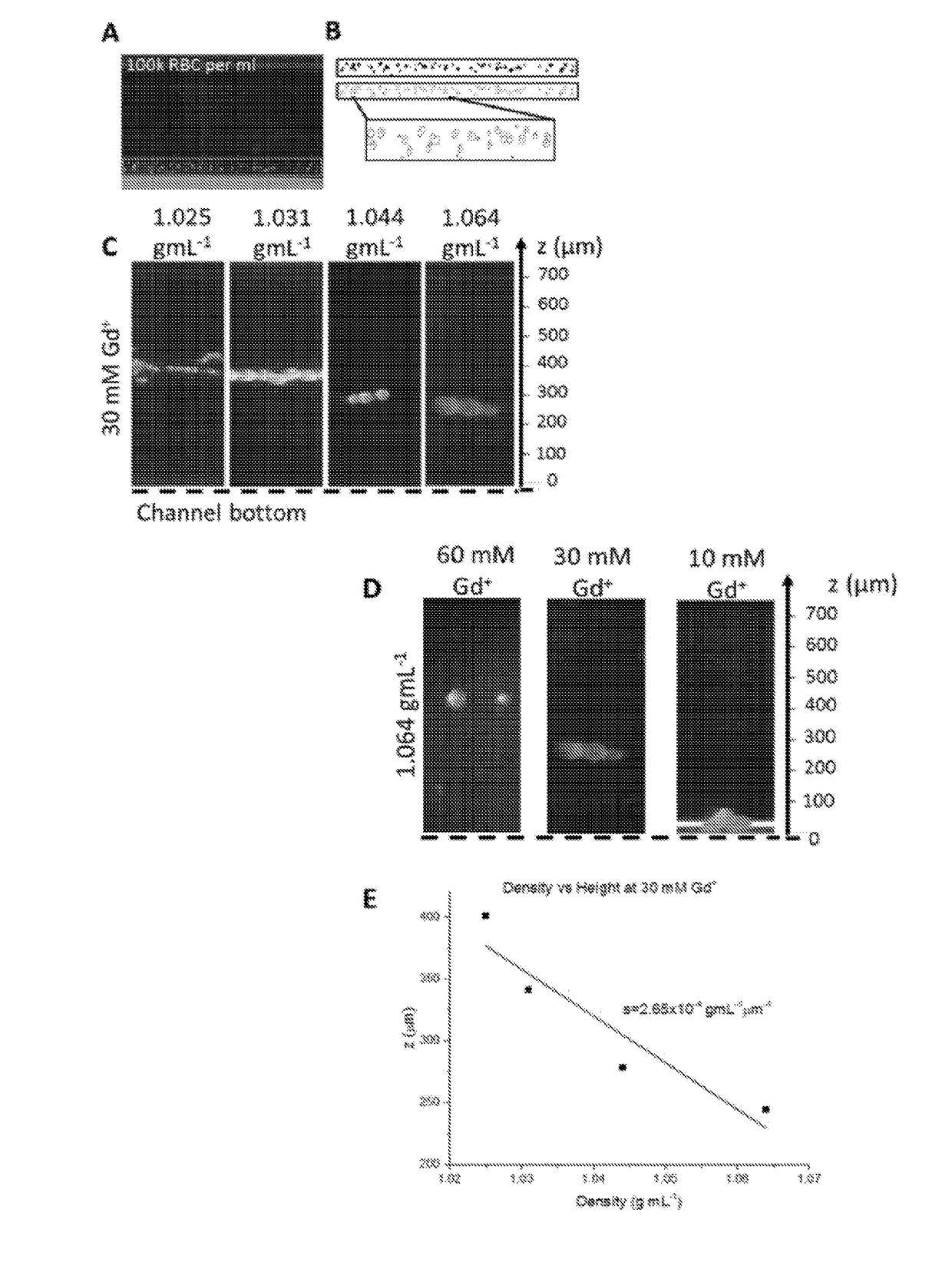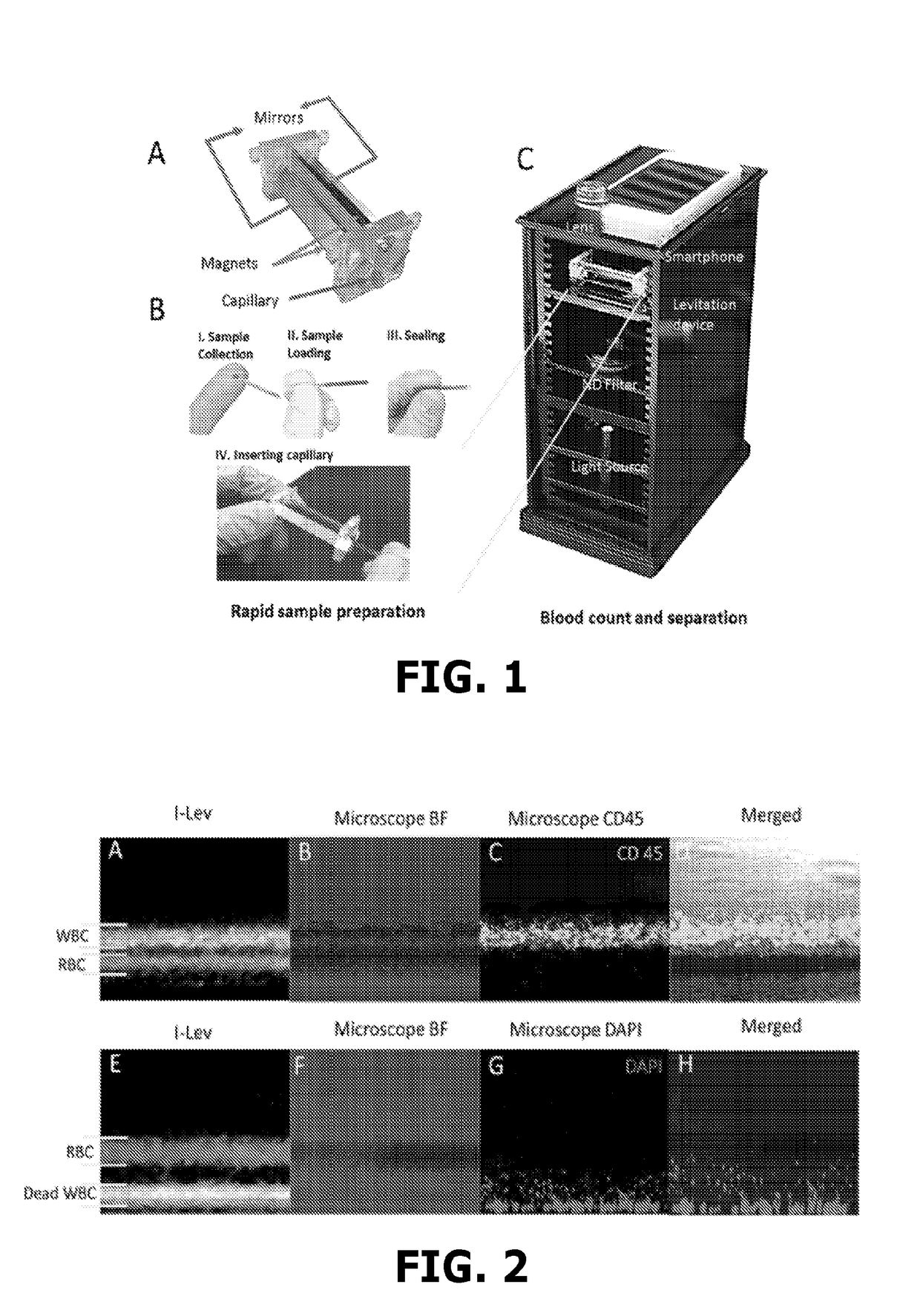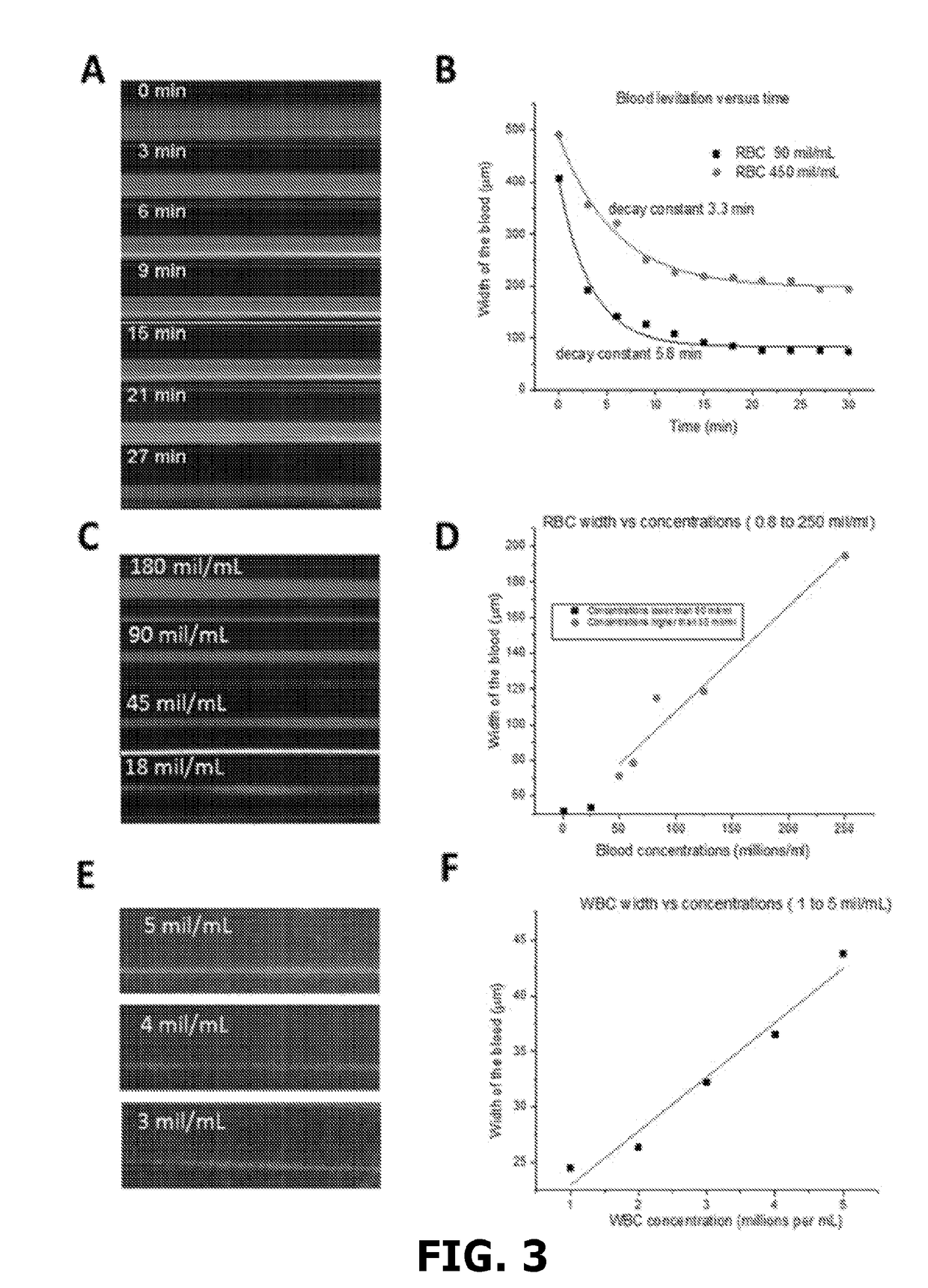Sorting Biological and Non-Biological Moieties Using Magnetic Levitation
a magnetic levitation and biological and non-biological technology, applied in the field of biological and non-biological moieties sorting using magnetic levitation, to achieve the effect of convenient use, robustness, and portability
- Summary
- Abstract
- Description
- Claims
- Application Information
AI Technical Summary
Benefits of technology
Problems solved by technology
Method used
Image
Examples
example i
struction and Design
[0106]The experimental setup of the magnetic levitation-based diagnosis system is as follows to build and use one form of the i-LEV system as illustrated in FIG. 1C. 3 mm-thick poly-methyl methacrylate (PMMA) pieces cut with a laser cutter (VLS 2.30 Versa Laser) were used to assemble the i-LEV system with dimensions of 160, 100, 205 mm, as shown in FIG. 1C. Threads with 3 mm steps were designed to accommodate insertion parts for different applications. The top layer of the i-LEV system has several different versions that are compatible with different brands of smartphones, as can be seen in the top row of FIG. 11. The height of the set-up can be halved for simple experiments which do not require extensive optical systems and light sources. The full-size i-LEV system can accommodate fluorescent imaging hardware by inserting broadband LEDs, as well as excitation and emission filters. Micro capillary channel (1 mm×1 mm cross-section, 50 mm length and 0.2 mm wall thi...
example ii
the Effect of Drugs Using Levitation Device
[0124]Referring now to FIG. 7, the effect of drugs was monitored using the levitation device. The levitation system was specifically used to study the effect of a malaria drug called chloroquine on red blood cells. In FIG. 7A, 75 mg / mL of chloroquine was spiked into red blood cells and their levitation was monitored with an i-LEV device. It can be seen that, with increasing time of exposure, the levitation height of red blood cells decreases upon addition of chloroquine to the blood sample. The effect of different concentrations of chloroquine on whole blood was also imaged as is depicted in FIGS. 7B-7D, from which it can be seen that 1.5 and 7.5 mg / mL have similar effects while 2.5 and 5 mg / mL are similar. In FIGS. 7B and 7C (FIG. 7C being a zoomed in graph of a section of FIG. 7B), chloroquine concentrations of 1.25, 2.5, 5 and 7.5 mg / mL are spiked into blood and levitation heights of these images were analyzed. FIG. 7D illustrates the ac...
example iii
ogy Studies Using the Levitation System
[0127]FIG. 9 shows the use of the levitation system, in mechanobiology studies. In FIG. 9A, breast cancer cells were placed in different collagen gels. 20% and 40% of collagen concentrations were used in this study. In this case, overlaid image won't be able to tell much details; however, in FIG. 9B (and the zoomed-in detail of FIG. 9B provided in FIG. 9C), density plots provide more details and enable saddle differences to be seen. Thus, the i-LEV device could be used for cell mechanics studies, including aging and stem cell differentiation.
PUM
| Property | Measurement | Unit |
|---|---|---|
| densities | aaaaa | aaaaa |
| densities | aaaaa | aaaaa |
| densities | aaaaa | aaaaa |
Abstract
Description
Claims
Application Information
 Login to View More
Login to View More - R&D
- Intellectual Property
- Life Sciences
- Materials
- Tech Scout
- Unparalleled Data Quality
- Higher Quality Content
- 60% Fewer Hallucinations
Browse by: Latest US Patents, China's latest patents, Technical Efficacy Thesaurus, Application Domain, Technology Topic, Popular Technical Reports.
© 2025 PatSnap. All rights reserved.Legal|Privacy policy|Modern Slavery Act Transparency Statement|Sitemap|About US| Contact US: help@patsnap.com



